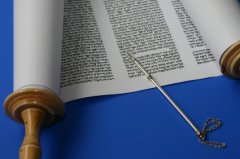Nothing special. Just books,cats,flowers,teas &accessories. Plus music with maybe sports thrown in for fun.
Saturday, October 8, 2011
Yom Kippur
Yom Kippur also known as "Day of Atonement" is the holiest of all the days of the Jewish year. It falls on the 10th day of Tishri, the 7th month of the Jewish ecclesiastical year and the 1st of the civil year,occurring in September or the first half of October.
Yom Kippur central themes are repentance and atonement. Jews who do not observe any other Jewish customs will observe this day.The "books" that G_d has written our names in is sealed after His judgement is entered into them and on Yom Kippur. This day is in essence the last chance one has to change the judgement, to demonstrate your repentance and make amends. The laws relating to it can be found in Leviticus 16 and Numbers 29.
Yom Kipppur is a complete Sabbat, for no work can be done on this day. For nearly 26 hours- from several minutes before sunset on Tishri 9 to after nightfall on Tishri 10 Jews "afflict their souls'. Which just means that they abstain from bodily pleasure, because they are prohibited on Yom Kippur. This is know as the Five Afflictions on Yom Kippur. They are as follows : fasting ( even water is not allowed) , washing or anointing the body (even deodorant), wearing leather shoes and no sex.
Now if there is a health reason or a threat to life then these restrictions can be lifted. In fact, children under the age of 9 and women in childbirth ( from the time labor starts to 3 days after the birth of the child) are NOT ALLOWED to fast even if they want to. Older children and women from the third to the seventh day are allowed to fast, but if they feel that they need to break the fast they are allowed to do so.
Before Yom Kappur the Jews perform the Kapport atonement service ( discussed in my DAYS OF AWE post) ; receive honey cake, in acknowledgment that we are all recipients of G_ds world and in prayerful hope for a sweet and abundant year; eat a festive meal; immerse in a mikveh (a collection of water, such as a bath) and give to charity. A late afternoon prefast meal is eaten followed by a blessing of their children, light a memorial candle as well as the holiday candles and go to the synagogue.
There are five afflictions correspond with the Torah which the Jews accept without allowing their physical needs to intervene. They also correspond with the five senses with which man performs a good deed and commits transgressions; to the five times the term nefesh (soul) is mentioned in the Yom Kippur Torah reading; to the five immersions of the Kohen Gadol (high priest ) on Yom Kippur when the sanctuary stood; and to the five prayer services prescribed for the day: Ma'ariv, the evening prayer, in which the solemn Kol Nidre service is done. Kol Nidre is a prayer in which Jews ask G_d to annul all personal vows made between the person making the prayer and G_d.Shacharit , the morning prayer that includes reading from Leviticus followed by the recalling of the dead service, Musaf ( additional prayer) which includes a detailed account of the Yom Kippur Temple service, Minchah (afternoon prayer) which includes the reading of the Book of Jonah.
Ne'ilah, the closing prayer, at sunset. The ark ( cabinet where the scrolls of the Torah are kept) remain open throughout this service thus one must remain standing throughout the service. There is a tone of desperation in the prayer of this service. The service is sometimes referred to as the "closing of the gates" because this is the last time to get a good word in before the end of the holiday. The service ends with a long blast from the shofar.
The Jewish congregation will say say the Al Chet confession of sins eight times in the course of Yom Kippur and recite Psalms at every available minute.
In the days of the Temple at Jerusalem the high priest offered sacrifices for the expiation of sin. At one point during the ritual the high priest placed his hands upon a goat as he confessed the sins of the people: the goat was then taken into the wilderness and thrown down the face of a cliff. This act symbolized the removal of guilt and G_d's forgiveness. The concept of the "scapegoat" originated in this ceremony.
HERE ARE SOME OTHER FACTS :
It is customary to wear white on Yom Kippur because it symbolizes purity and calls to mind the promise shall be mad as white as snow.
This is the only day in which the tallit, the four corner prayer shawl with fringes that symbolize the 613 commandments, is worn in the evening.
During Viddui, the communal confession, it is customary to beat on one's chest.
It is said that "On Rosh Hashanah, it is written. On Yom Kippur it is sealed." Thus the traditional Yom Kippur greeting is "G'mar Tov" (finish well) or "G'mar Chatima Tov" (may you be sealed in the book of life.
Subscribe to:
Post Comments (Atom)



No comments:
Post a Comment